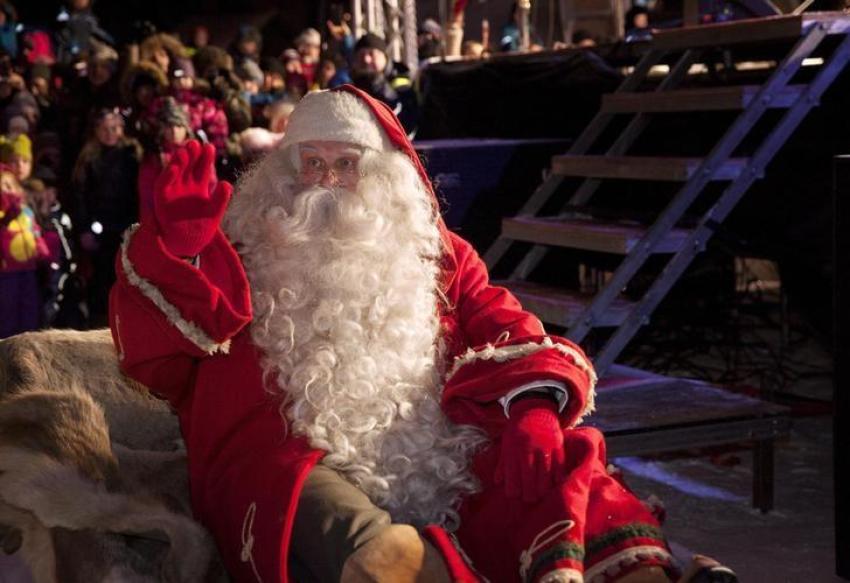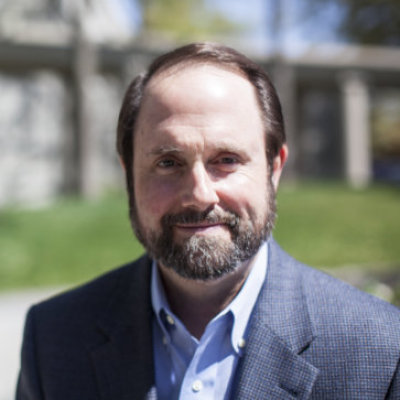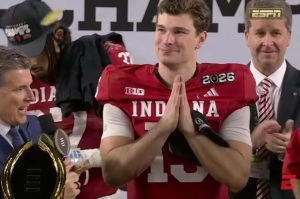Jim Denison lists ways Christians can share message of Christ through holiday traditions

There are many annual traditions and adornments that are part of the Christmas holiday season, some religious and some secular, and Jim Denison shared several ways Christians can keep their family's focus on the spiritual significance of the holy day by sharing Christ in every aspect.
“Many of our Christmas traditions have spiritual significance,” said Denison, a former pastor, teacher of apologetics, and founder of Denison Ministries, in an interview with The Christian Post.
Denison, whose podcast and daily columns reach over 250,000 subscribers worldwide, recently wrote a piece on Christmas traditions titled "What does the Bible say about Santa Claus?" to explain where many of these global traditions and symbols originated and to offer his own response to the question: "Is there a Santa Claus?"
“There really was a St. Nick and we can learn so much from his life,” Denison told CP.
Many of the traditions connected to the celebration of the birth of Jesus Christ have been criticized for their non-Christian origins. Traditions such as the Yule log, the Christmas tree, and even the date of the holiday stem from pre-Christian religious observances. Denison, however, stressed the importance for Christians to practice the holy aspects of the season.

In a Q&A with CP, Denison explained how even elements that are largely viewed as secular aspects of the holiday season can be used to convey spiritual truths.
CP:What inspired you to write “What does the Bible say about Santa Claus?"
Denison: As with many holidays, there is history and myth intertwined in the traditions and origins of Christmas. But for Christians, the most important, valid information comes from God’s word.
What does the Bible say about the jolly old man we see every Christmas in malls and store advertisements and for whom small children await in eager anticipation on Christmas Eve? The figure we know as Santa Claus who brings gifts piled up on a sleigh pulled by reindeer all the way from his home at the North Pole?
The short answer, of course, is nothing. But there’s more to the story about Santa. There really was a St. Nick, and we can learn so much from his life.
If practiced as first intended, Christmas traditions can convey spiritual truth and joy.
CP: In your study of Santa and popular Christmas traditions, what did you discover was biblical and what was not?
Denison: There’s reality behind the story and history of Santa Claus.
There actually was a man known as Nicholas who was born in AD 280 in Asia Minor, which is modern-day Turkey. He was bishop of the church in Myra, participated in the First Council of Nicaea, and helped the church find the best language to describe the Incarnation of Jesus.
St. Nicholas was beloved because he spent his life helping the poor and underprivileged. He was the first to initiate programs for mentally challenged children. His love for children led him to visit their homes at night disguised in a red-and-white hooded robe to leave gifts of money, clothing, and food in their windows or around their fireplaces.
Nicholas was one of history’s most venerated saints, with more than 500 songs and hymns written in his honor. Christopher Columbus arrived in Haiti in 1492 and named the port after him. By the year 1500, more than 700 churches in Britain were dedicated to him.
The Dutch especially appreciated his life. They spelled his name Sint Nikolass, which, in America, became Sinterklass, or Santa Claus.
Many of our other Christmas traditions have spiritual significance:
- Lighting a Christmas candle symbolizes the coming of the Light of God. When Jesus first visited our planet, He fulfilled the promise made seven centuries earlier: “The people dwelling in darkness have seen a great light, and for those dwelling in the region and shadow of death, on them a light has dawned” (Matthew 4:16; Isaiah 9:2).
- The poinsettia reminds us of the blood of Jesus, shed on the cross or us all. When you set out these plants this year, pause to remember the fact that Jesus was born to die. We could not climb up to God, so he climbed down to us. He is the Lamb slain from the foundation of the world (Revelation 13:8).
- ·When you see a wreath this Christmas season, pause to give thanks for the victory won for you by Jesus. In Roman times, and in Greek culture before them, a wreath signified victory in an athletic competition. Much like Olympic gold medals, wreaths woven of leaves or made of gold were given to the winners of significant races and contests.
In the same way, you and I wear the wreath of eternal victory in Jesus. He has won the battle against sin and Satan. If He is your Lord, eternal security is yours. You are in His hand, and no one can take you from his protection and care (John 10:28).
CP: Do you believe Christians have allowed this season to become about something other than the true reason?
Denison: In 1897, 8-year-old Virginia O’Hanlon wrote a letter to the editor of New York City’s The Sun newspaper. She asked, “Please tell me the truth, is there a Santa Claus?”
News writer Francis Pharcellus Church soon responded in the newspaper’s editorial section with one of history’s most reprinted newspaper editorials: “Yes, Virginia, there is a Santa Claus.”
He went on to explain “the existence” of Santa Claus in terms of the love and generosity that Christmas ushers in every December. He encouraged her not to be swayed by the skepticism of the age.
I might answer Virginia O’Hanlon’s question about Santa Claus differently than Francis Pharcellus Church did. But I would not want to take the imagination, joy, love, or generosity out of it. Rather, I would want to show little Virginia how so many of the ways we observe Christmas today tie us back to the first Christmas. We don’t want to lose sight of the real story of Christmas.
And, yes, Virginia, there is a real Jesus.
CP: How do you advise families go about being festive but still holy?
Denison: While there are many ways to keep Jesus’ birth at the center of this season, let me offer some ideas that you might use or adapt to your Christmas observance to keep it holy. The term holy simply means set apart or different. How can your observance of Christmas be set apart or different from the culture’s gift-giving frenzy?
There are a variety of ways to make the Christmas holidays holy days. Discover what works best for your family. Here are three ideas.
1. Observe Advent: The word advent comes from Latin and means arrival. While often ascribed to more liturgical church traditions, Advent counts down the days to Christmas in a way that builds anticipation and instills the story of Christmas in our children and grandchildren.
Advent calendars are widely available, but be sure it’s observing Christmas as Jesus’ birth, not a more secular approach. You and your family could also have an Advent wreath observance.
2. Give to missions: Have a discussion with your family about ministry or mission opportunities that you could support as a family. Many denominations and churches have special offerings this time of the year in support of missions. Many have community or missions projects to help meet local or global needs.
Perhaps your largest gift financially this year could be to missions. Make the gift a family decision. Allow your children or grandchildren not only to participate in the decisions but also to divide your gift among family members so that everyone gives. As a family, you could commit to praying or volunteering with ministries.
3. Bring your nativity scene to life: In recent years, “The Elf on the Shelf” has become a popular tradition. But I recently heard of a variation of that idea with a Nativity scene.
Mary and Joseph and the shepherds could be scattered around your home and moved daily in search of a place for baby Jesus to be born. The baby does not appear until Christmas morning, when Mary, Joseph, and the shepherds all arrive at the manger scene. Maybe the wise men could still be traveling from the East.
CP: How can celebrating the true Christmas message help the state of the world?
Denison: Christmas is not just a holiday. It’s a holy day. It’s not a myth. It’s a fact. When Jesus returned to His Father, He did not take his light with Him. Instead, He handed it to you and me. Like Olympic torchbearers, we have been handed His flame. It now rests in your hands. It will spread through the world to the degree you give it to those we can.
Jesus was clear about this responsibility and privilege: “You are the light of the world. A city set on a hill cannot be hidden. Nor do people light a lamp and put it under a basket, but on a stand, and it gives light to all in the house. In the same way, let your light shine before others, so that they may see your good works and give glory to your Father who is in heaven” (Matthew 5:14–16). “You” is plural in the Greek. Every believer is the custodian of the candle of Christmas.
If Jesus is your Lord, His light is in your hands.

























